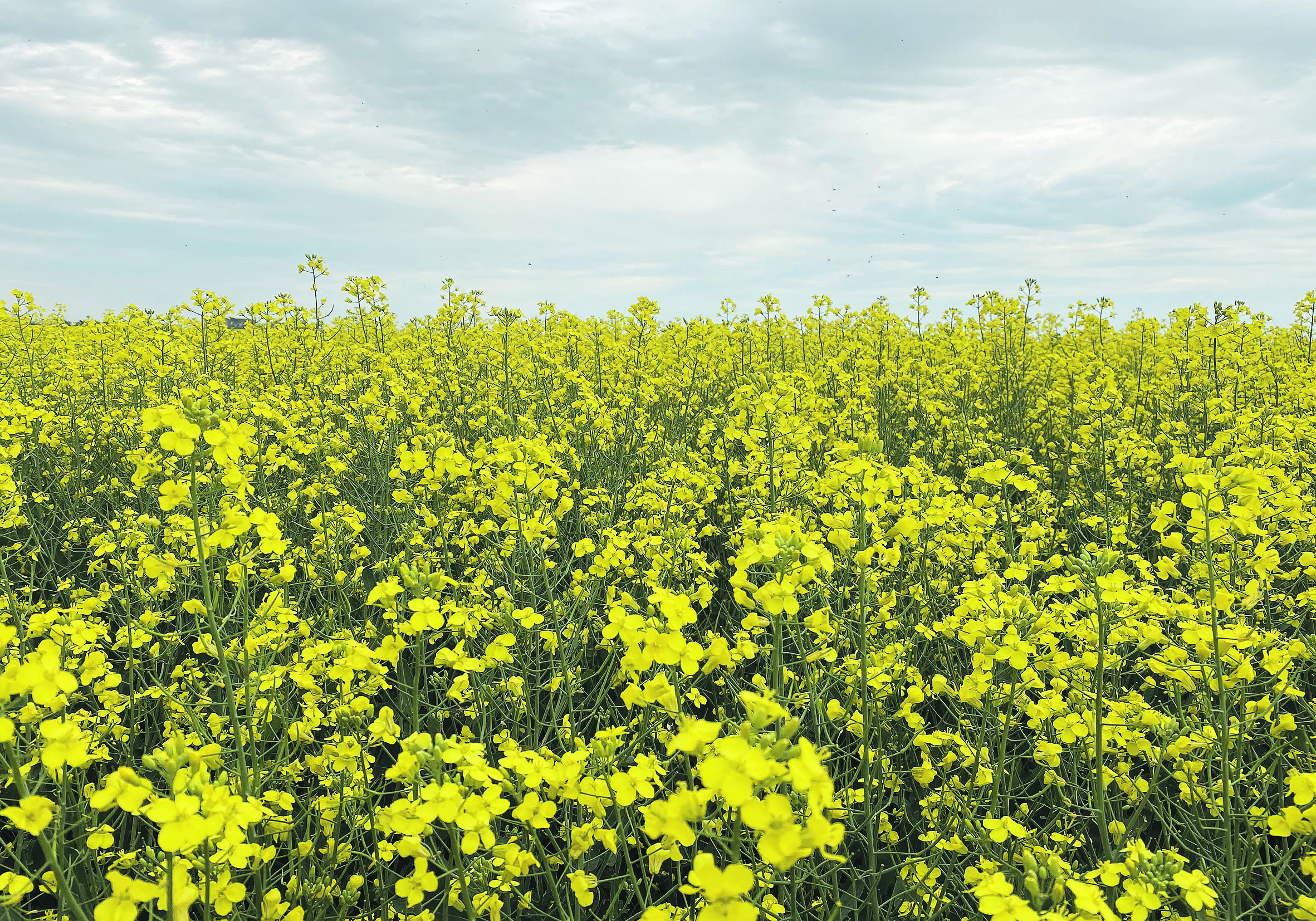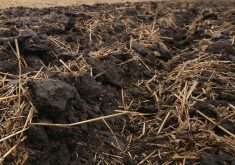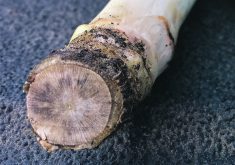Alberta researchers determine that verticillium stripe is more severe in canola growing regions where pH is 7.4 to 8.6
WINNIPEG — Verticillium stripe is a more common and troublesome disease for canola growers on the eastern half of the Prairies, particularly in Manitoba.
Meanwhile, verticillium isn’t a huge issue in Alberta.
There may be a simple reason for this geographic variation — soil pH.
Read Also

Using artificial intelligence in agriculture starts with the right data
Good data is critical as the agriculture sector increasingly adopts new AI technology to drive efficiency, sustainability and trust across all levels of the value chain.
Researchers at the University of Alberta have learned that Verticillium longisporum, the fungus that causes verticillium stripe in canola, is more potent when soil is slightly alkaline.
Lab testing found that fungal colonies were larger when the pH was between 7.4 and 8.6.
“Along with that, the symptoms of infection in both seedlings and adult plants generally became more pronounced as soil pH increased, with disease severity at its worst at pH 7.8,” says a U of Alberta news release about the discovery.
A group of plant pathologists at the U of A, including Becky Wang, have published their findings in horticulturae, an academic journal.
Verticillium stripe was first discovered in 2014 in Western Canada in a canola field near Winnipeg.
The soil-borne disease infects canola plants and produces tiny, pepper-like sclerotia on or inside the stem. The infection interferes with the uptake of water and nutrients. Symptoms include early ripening, plant stunting and leaf chlorosis and shredding or striping of the stem tissue. The symptoms usually appear later in the growing season.
Over the last decade, the fungal disease has become commonplace in Manitoba and eastern Saskatchewan.
The geographic extent of verticillium is unknown, but it continues to spread westward.
Travis Wiens, an MNP agronomist in Milestone, Sask., said the disease was detected in North Battleford, Sask., this summer.
Agronomists and canola experts remain unsure about the yield drag of verticillium, but it’s likely the fungus is a yield robber.
The U of A researchers grew canola in a lab, experimenting with acidic and alkaline soils.
Disease symptoms hit a peak at a soil pH of 7.8.
“It suggests a substantial risk of increased disease severity and yield losses due to verticillium stripe in regions with neutral to slightly alkaline soils,” says the published paper.
Growing canola in a lab is different than conditions in a field on the Prairies. Nonetheless, the results might explain why clubroot is a major issue for canola growers in Alberta but is less problematic in Manitoba.
Clubroot is a soil-borne disease where large galls form on the roots of canola plants, causing stunting, yellowing and premature ripening.
“In Manitoba, we don’t talk much about clubroot. We talk about verticillium,” said Justine Cornelsen, agronomic and regulatory services manager with BrettYoung Seeds in December 2023.
Manitoba has more alkaline and neutral pH soil than Alberta and Saskatchewan. Soil in Alberta can be more acidic, which favours the development of clubroot and possibly hinders the impact of verticillium.
Again, results from a lab don’t always reflect the realities of field conditions.
More research may be needed to understand the connection between soil pH and verticillium, the U of A scientists wrote.
“The observation that pH can profoundly affect the growth and virulence of V. longisporum (verticillium) may be valuable for growers,” they said.
“Future research, particularly under field conditions, could further enhance our understanding of the pH effects on (verticillium).”
















